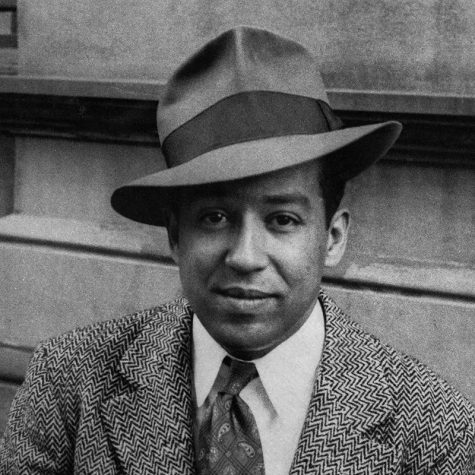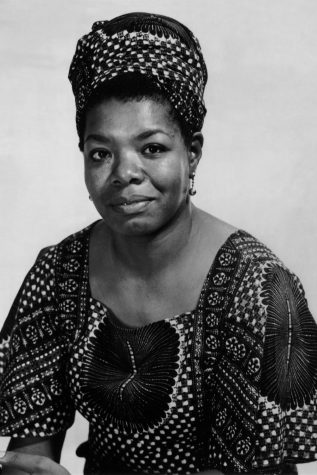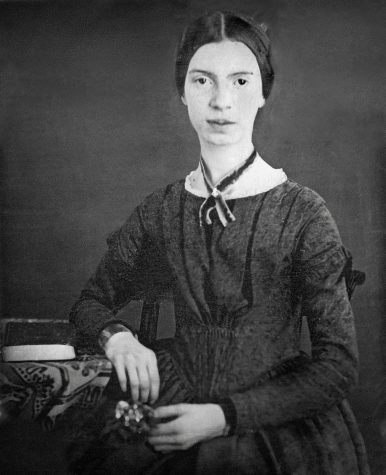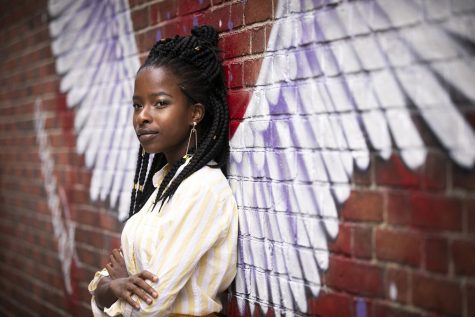Recognizing Voices of Then and Now in A Celebration of National Poetry Month
April 17, 2022
“[Poetry is] that subtle fire and inward light which seems at times to shine through the world and to touch the images in our minds with ineffable beauty.” – George Santayana (1863–1952)
Poetry is an art form that often goes unappreciated, as many people consider it flowery, archaic, and even boring. However, through the interplay of sound and rhythm, this powerful genre is used as a platform for expressing deep emotions, appealing to humanity, connecting readers through a shared experience, speaking the truth, and critiquing the world around us.
Recognizing the importance of poetry and the need for promoting this beautiful art, the Academy of American Poets established National Poetry Month in 1996. Now, each year in April, a season of blossoming joy, warmth, and renewal, we celebrate poetry in what has come to be the world’s largest literary celebration.
In honor of the 26th National Poetry Month, the following highlights some of the most compelling voices of both the past and present:

Langston Hughes
I look then at the silly walls through dark eyes in a dark face—and this is what I know: that all these walls oppression builds will have to go! – “I Look at the World”
In 2001, the Academy of American Poets invited people to cast votes for an American Poet they felt worthy of being recognized on a postage stamp. According to Poetry Nation, out of 10,000 ballots and 205 poets nominated, Langston Hughes was the overwhelming winner.
Langston Hughes (1902-1967), a social activist and member of the Harlem Renaissance, is known for his jazz poetry style, evocative of jazz music, and his depiction of the nuances of the everyday African-American experience in the 1920s. Through his writing, Hughes highlights the joys, blessings, and beauty of black lives, as well as the struggles, oppression, and unattractive realities. As he wrote in “The Negro Artist and the Racial Mountain,” “We younger [Black] artists who create now intend to express our individual dark-skinned selves without fear or shame. If white people are pleased we are glad. If they are not, it doesn’t matter. We know we are beautiful. And ugly too.”

Maya Angelou
But a caged bird stands on the grave of dreams his shadow shouts on a nightmare scream his wings are clipped and his feet are tied so he opens his throat to sing. The caged bird sings with a fearful trill of things unknown but longed for still and his tune is heard on the distant hill for the caged bird sings of freedom. – “Caged Bird”
Maya Angelou (1928-2014) worked closely with Dr. Martin Luther King Jr. and Malcolm X during
the Civil Rights Movement of the 1960s, helping to organize protests and advocate for freedom as
an iconic civil rights activist. During this time, she used her artistry to inspire hope for the
oppressed and demand justice. In her poetry, she depicts the beauty and strength of black people
while underlining the anguish they suffer as a result of discrimination. Through powerful imagery
and symbolism, she calls for transformation toward a more equitable world. Carol E. Neubauer
recognized her in 1975 “as a spokesperson for…all people who are committed to raising the moral
standards of living in the United States.”

Emily Dickinson
“Hope” is the thing with feathers – that perches in the soul – and sings the tune without the words – and never stops – at all – and sweetest – in the Gale – is heard – and sore must be the storm – that could abash the little Bird that kept so many warm – I’ve heard it in the chilliest land – and on the strangest Sea – yet – never – in Extremity, it asked a crumb – of me. – “Hope is the Thing with Feathers”
Emily Dickinson (1830-1886) is considered to be one of the most original poets of all time since her extensive use of dashes and interior capitalization, as well as her rhyming scheme and structure, were highly unconventional for her time. By ignoring the usual rules of grammar and versification in her poetry, Dickinson created a distinct voice and an “elliptical language for expressing what was possible but not yet realized.” Furthermore, as a highly acclaimed female writer in a patriarchal society, she paved a path for women poets of the future.
Dickinson’s poetry, aside from being unconventional in form, highlights the human condition in all of its complexities, exhibiting reoccurring themes of love, death, and nature. She speaks of seclusion, loss, immortality, desire, intimacy, fame, triumph, nature, and religion. Overall, drawing from her lived experiences and the true nature of things, Dickinson’s poetry allows us insight into her perception of life.

Amanda Gorman
We are striving to forge a union with purpose, to compose a country committed to all cultures, colors, characters and conditions of man. And so we lift our gazes not to what stands between us, but what stands before us. – “The Hill We Climb”
Amanda Gorman, just 24 years of age, is an already highly accomplished contemporary poet, for, among many other accolades, she is the first youth poet laureate and youngest to present the presidential inaugural reading. As a youthful voice giving power to the upcoming generations, Gorman’s writing decries the social injustice in our world while expressing hope for the future and calling readers to action.
For example, in her piece “The Hill We Climb,” Gorman calls for “unity and justice, through both reckoning with the nation’s past and looking towards its future.” In this poem, presented at the presidential inauguration of Joe Biden, Gorman calls for us to “put our differences aside,” “lay down our arms,” and learn from our past so that we can heal and unite as a nation that honors its rich diversity.
Alexandra Huỳnh
But because you view my body as invitation to comment, I must now remember that I am a woman. I stopped to be polite. First mistake—if you really wanted to, you wouldn’t ask. Now ask me what I want. No, really: His words will decay in your chest, but you’ll survive the bloat. That’s what scares me. – “Life Cycle of a Catcall”
Following in the footsteps of Amanda Gorman, 18-year-old Alexandra Huỳnh became the fifth person to achieve the title of national youth poet laureate in 2021. A second-generation Vietnamese American, Huỳnh uses poetry as a way of honoring her culture and the values it has instilled in her. In speaking about her poetry, as reported by the Los Angeles Times, she said “Vietnamese culture has taught me that family and community are the most important things because they make the highs higher and the lows not as low. It’s really important for me to honor the culture that I’ve been brought up in.”
Huỳnh embraces the power of poetry to connect with and inspire others through storytelling. As she commented in an interview, “I think one reason why poetry really struck a chord with our nation is because it’s a really compelling form of storytelling. Stories are a way for us to build empathy and really step into experiences that perhaps we didn’t know we could relate to, and it’s a really powerful connector. So moving forward, I’m looking forward to inspiring other young people to continue telling their stories, because I think vulnerability is one of the most challenging parts of being human.”
Isabella Ramirez
My mama’s English is a stubborn wine stain on a white dress. She scrubs at her twisted tongue desperate to clean the spice, el cilantro, la salsa that is her accent. Her accent is the tambourine she hides in the back of her mouth behind the ivory piano keys that are her teeth, she speaks a merengue, bachata, ranchera, tonada that she mutes to make room for her English. – “Mama”
Yet another young artist with a powerful voice, Isabella Ramirez is a queer Latina poet who seeks to honor her culture and family while representing and uplifting marginalized voices. Many of her poems feature an interplay between English and Spanish as a tribute to her identity being born in Puerto Rico and raised in the United States. In celebrating her heritage and her experiences with identity, Ramirez uses her story to connect with others through a shared experience and therefore empower them to celebrate what makes them who they are.
As she stated in an interview for NPR, “In my themes of identity, I want to speak from my experience. I am someone who has both struggled and faced successes [with my identity]. As someone who is Latina, who is queer, all people can relate in some way to my story and how their identity has affected their stories as well.”
